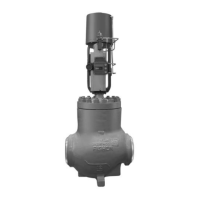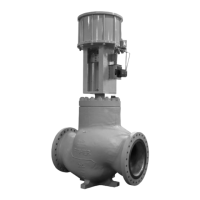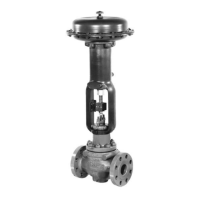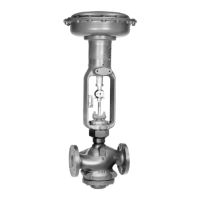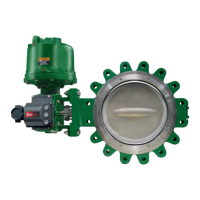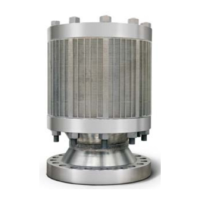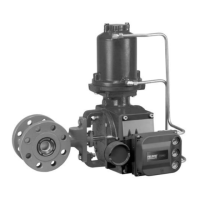CAUTION
8. The pilot spring case vent (key 54, Figure 16) must
be kept open to atmospheric pressure. A clogged
pilot spring case vent may cause the relief valve
or backpressure regulator to function improperly.
To prevent plugging (and to keep the spring case
from collecting moisture, corrosive chemicals or
other foreign material) point the vent down, orient
it to the lowest possible point on the spring case or
otherwise protect it. Protect the vent assembly from
icing, moisture or debris that may cause blockage,
as required. Inspect the vent regularly to make sure it
has not been plugged. To change the vent orientation,
twist the vent assembly in the spring case.
9. To remotely vent a spring case, remove the vent
and install obstruction-free tubing or piping into
the 1/4 NPT vent tapping. Provide protection on a
remote vent by installing a screened vent cap onto
the remote end of the vent pipe.
Startup and Shutdown
If pressure is introduced first to the
main valve before the pilot, the main
valve may go wide-open and subject the
downstream system to full inlet pressure.
Note
The maximum inlet pressure for specific
constructions are given in Tables 1 and
2. Use a pressure gauge to monitor inlet
pressure during startup.
Relief Installation (Figure 3)
Startup
1. Close upstream vent valve (not shown).
2. Slowly open block valve and hand valve, if installed.
3. Adjust the pilot as needed.
Shutdown
1. Close block valve and hand valve, if installed.
2. Slowly open upstream vent valve (not shown).
Backpressure Installation (Figure 3)
Startup
1. Close upstream and downstream vent valves
(not shown).
2. Slowly open upstream block valve first and then
slowly open downstream block valve.
3. Adjust the pilot as needed. If the pilot is not piped
downstream, make sure the pilot exhaust is
pointed in the correct direction.
Shutdown
1. Close upstream block valve first and then close
the downstream block valve.
2. Open downstream and upstream vent valves
(not shown).
Pilot Adjustment
The factory setting of the regulator can be varied
within the pressure range stamped on the nameplate.
To change the set (control) pressure, loosen the
jam nut (key 17, Figure 16) and turn the adjusting
screw (key 15) clockwise to increase set (control)
pressure or counterclockwise to decrease it. Monitor
the set (control) pressure with a test gauge during the
adjustment. Tighten the locknut to maintain the
desired setting.
Recommended set (control) pressure ranges available
and color codes of the respective springs are shown in
Table 3.
Type 112 Restrictor Adjustment (Figure 5)
The Type 112 restrictor controls the relief valve or
backpressure regulator’s accuracy and speed of
response. A restrictor setting of “6” for the 1, 2 and
3 in. sizes and “8” for the 4 in. size are recommended
to optimize accuracy, speed of response and stability.
However, the restrictor can be used to fine tune the
relief valve or backpressure regulator for maximum
performance by decreasing the restrictor setting for
tighter control (increased opening speed, decreased
closing speed); or increasing the restrictor setting
for maximum stability (decreased opening speed,
increased closing speed). A lower setting also provides
a narrower proportional band for better accuracy. The
“8” position has the largest flow, is most stable and
easiest for startup. The “0” setting has the smallest
(minimum) flow passage; at no point of rotation will the
Type 112 restrictor be completely shut off.
Note
Mineral, dirt and sediments may
gradually deposit and build up inside the
spaces of the restrictor. This may cause
the unit response to get slower and unit
performance to decrease. If clogging of
the restrictor is suspected, immediately
check and clean the restrictor.
7
Type LR128

